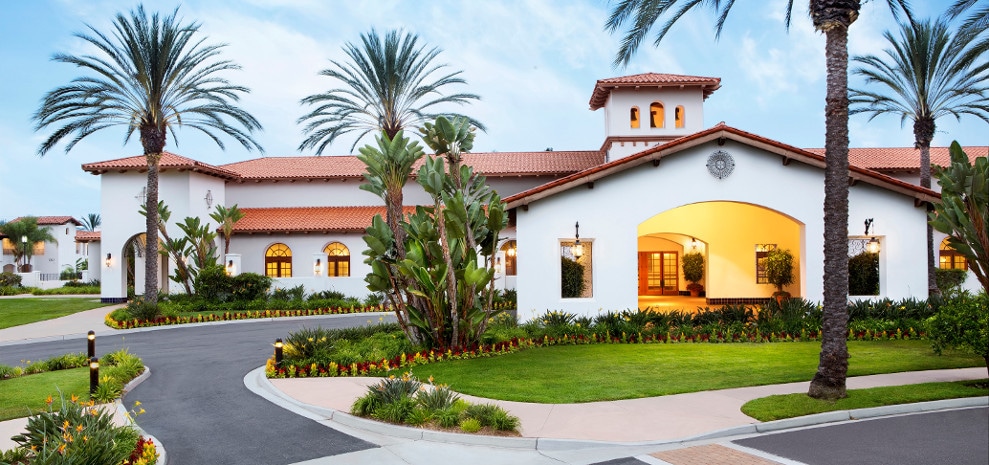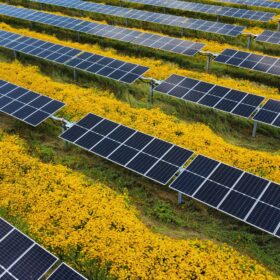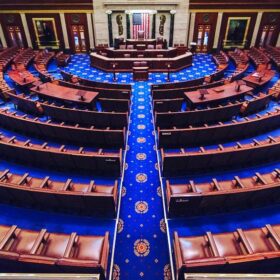“The tariffs are bad.”
In the contest for stating the obvious, Borrego Solar CEO Mike Hall may have won a prize today. However, he was merely vocalizing the general opinion of what was likely the entire audience at the Solar Power Finance and Investment conference in Southern California.
And yet six weeks after U.S. President Donald Trump imposed 30% global tariffs on imported PV modules and cells, the feeling from this conference is that the U.S. solar industry has largely regrouped, adapted to the new circumstances and moved forward.
The breakdown by market segments appear to be in line with analyst’s predictions. “Residential is still quite strong, C&I rooftop is picking up as well and large utility-scale is still suffering,” stated Nigel Cockroft, the general manager for JinkoSolar’s U.S. business, in a morning panel session.
It appears that in many cases the prices are simply being absorbed by manufacturers and developers, slimming margins and making the United States a less attractive market for foreign PV makers like JinkoSolar to sell into.
And instead of killing projects outright, in many cases Section 201 appears to be affecting project pipelines. Cockroft noting that the step-down in tariff levels is encouraging developers and construction contractors to wait for the Spring of 2019. “We are still in a situation where customers are trying to figure out how much they can buy, and how much they are willing to pay,” explains Cockroft.
This will eventually run into the scheduled decline of the federal Investment Tax Credit (ITC), and Cockroft predicts a boom in 2019 due to this factor.
As is often the case with policy change, it appears that with Section 201 the uncertainty leading up to the decision may have been more damaging than the tariffs themselves. Scott Canada, senior VP of renewable energy at McCarthy Building Companies, concurred with Cockroft’s timeline, predicting that after a year of market interruption the bulk of the impact from Section 201 is going to pass by the middle of this year.
U.S. manufacturing, or not
Another widely held agreement is that the Section 201 process is not resulting in much new U.S. manufacturing. Given both the significant investment and timeline needed for cell factories, as well as the 2.5 GW cell exemption, new cell manufacturing is out of the question.
The impact on module manufacturing is also limited. JinkoSolar’s Cockroft was sure to frequently plug his company’s factory planned for Jacksonville, Florida, without providing any information that is not already publicly available. No one outside the company appears to know what the capacity of the facility will be, however the level of investment was recently dialed down from $410 million to $50 million.
JinkoSolar’s factory has been by far the largest announcement for new U.S. capacity, with SolarWorld making cautious statements about rehiring at levels which would not even bring it to full utilization of its existing facilities.
Jinko’s move is also unusual given that analysts have repeatedly stated that there is no business case for building module factories over four-year timeline of the Section 201 tariffs, unless there are other factors at play. JinkoSolar gave a hint of that in its presentation, with Cockroft saying that the certainty of costs at its Jacksonville factory may be more of a factor than favorable economics.
Of course, discussions of manufacturing frequently miss the essential fact that the large majority of existing solar manufacturing is not in cells and modules, but balance of system components. “There is a lot of racking and components, steel manufacturers, pile-driving equipment… this was bad for U.S. manufacturing,” argued Swinerton Renewable Energy President George Hershman.
New concerns and opportunities
Beyond the Section 201 tariffs, there are a wide variety of new challenges and opportunities for the U.S. solar industry. In a presentation by renewable energy tax and finance lawyer extraordinaire Keith Martin, the audience was informed that early concerns about the Base Erosion Anti-Abuse Tax (BEAT) provision have largely evaporated, estimating that renewable energy finance from only five banks will be affected by the provision.
“This is not expected to affect solar in terms of the amount of tax equity raised,” declared Martin.
However, in the place of BEAT there are multiple other concerns. The other changes in the tax code are not necessarily negative on the whole for renewable energy, but are many and complex.
What is a definite negative are new tariffs on steel and aluminum, which will add an estimated 2 cents per watt to solar projects, not to mention the potential for additional tariffs against any number of Chinese projects through the Section 301 process.
U.S. President Donald Trump is widely expected to make a ruling on the Section 301 tomorrow, with multiple media outlets predicting tariffs on dozens of products. And despite SolarWorld testifying during the process, it is not clear if PV cells, modules or other products will be included. Similarly, recent rulings at FERC are creating concerns over the future role of renewable energy in wholesale markets.
But not all the political effects are negative, and Borrego’s Mike Hall notes that Trump’s actions in some cases are pushing politicians at the state level to take action on renewable energy.
“There are a lot of great bills moving through mostly blue states,” states Hall. “We see a lot of states saying – how do we get middle markets growing, how do we get solar into the built environment.”
And while the solar industry is showing its remarkable resilience – even after Section 201, it appears that nothing is certain.
This content is protected by copyright and may not be reused. If you want to cooperate with us and would like to reuse some of our content, please contact: editors@pv-magazine.com.









By submitting this form you agree to pv magazine using your data for the purposes of publishing your comment.
Your personal data will only be disclosed or otherwise transmitted to third parties for the purposes of spam filtering or if this is necessary for technical maintenance of the website. Any other transfer to third parties will not take place unless this is justified on the basis of applicable data protection regulations or if pv magazine is legally obliged to do so.
You may revoke this consent at any time with effect for the future, in which case your personal data will be deleted immediately. Otherwise, your data will be deleted if pv magazine has processed your request or the purpose of data storage is fulfilled.
Further information on data privacy can be found in our Data Protection Policy.